George Rose (1861-1942) was a prodigious Victorian photographer, famous for his postcards of Victoria published by the Rose Stereograph Company. Not so well known are his photographs from a visit he made to Korea and Japan in 1904, which provide a fascinating glimpse into the lives of Korean and Japanese people at the time.
Rose was born in Clunes, a gold mining town, on 10 December 1861. After leaving school, he worked in his father’s shoe shop in the town. George’s photographic career took off when he discovered his talent for creating stereographs, which were enormously popular in the nineteenth and early twentieth centuries. Stereographs are taken with a camera which has dual lenses to create a pair of images, side by side. They are then mounted on a card. When inserted into a special viewer called a stereoscope, the dual images form one three-dimensional image.
One of Rose’s photographs shows a Japanese woman using a stereoscope:

Rose had an enquiring mind and an adventurous spirit. He visited Korea in 1904, when Japanese forces were in the country to launch an assault against Russia. 1
Korea was undergoing sweeping changes with the Japanese presence, as well as encountering modern western technology and culture for the first time. Most Korean people still lived a traditional life in rural areas: travelling on foot, using pine branches for fuel and drawing water from the stream to wash their laundry. “Respectable” women hid their faces behind a cloak.
Photographs of Korea at the time are rare. Photographic technology arrived late in Korea, and most of the photos taken were by amateurs or by Korean photographers who were still learning the craft, so their work has not survived. As a result, Korea was not extensively photographed. By contrast, Rose was an experienced photographer who had been taking photos since 1880 and used professional equipment. His glass negatives have been preserved in excellent condition. We are indebted to Rose for providing this unique insight into historic Korea and Japan.
What makes Rose’s images distinctive are the scenes of everyday life they capture: local people in traditional costume walking the streets, street vendors and farmers in crowded markets, busy labourers and children standing on the rocky city walls. Rose did not “pose” his subjects: he photographed the people as he saw them. Their activities take place against a backdrop of local buildings with tiled and thatched roofs, pagodas, temples and rural landscapes. His images also reveal the lives of labour-intensive work for the lower classes. The presence of Japanese soldiers in some photos highlights the tense political background. Rose’s captions provide interesting additional information and his personal opinions on each situation.
Most of Rose’s photos deal with civilian life rather than being overtly political. Two photos that do highlight the political situation in Korea show Japanese soldiers standing at the Arch of Independence in Seoul, Korea:
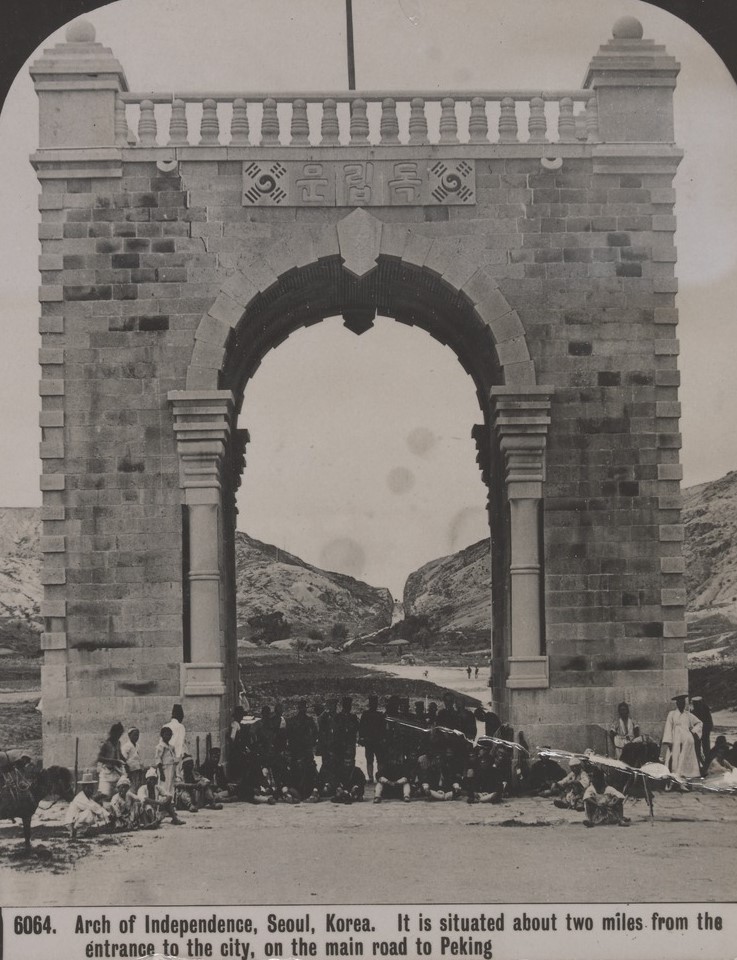
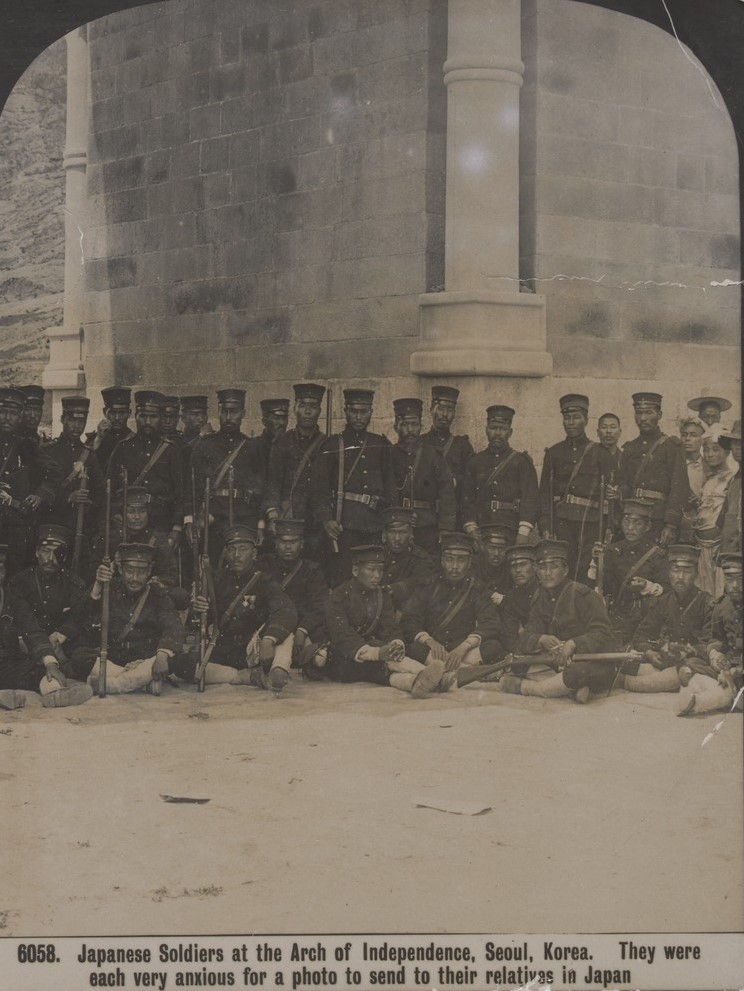
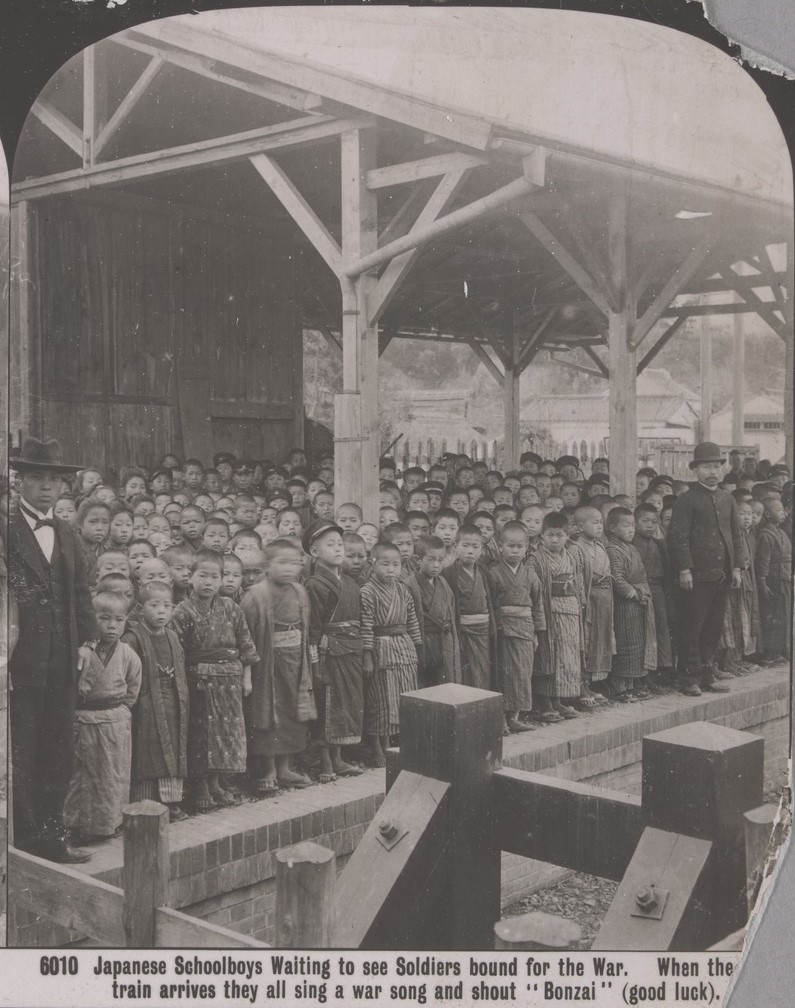
In Japan, Rose captured the moment when rows of small Japanese boys waited for a train carrying soldiers to arrive, before they went off to war. When the train arrived, the children sang a war song and shouted “Good luck!”
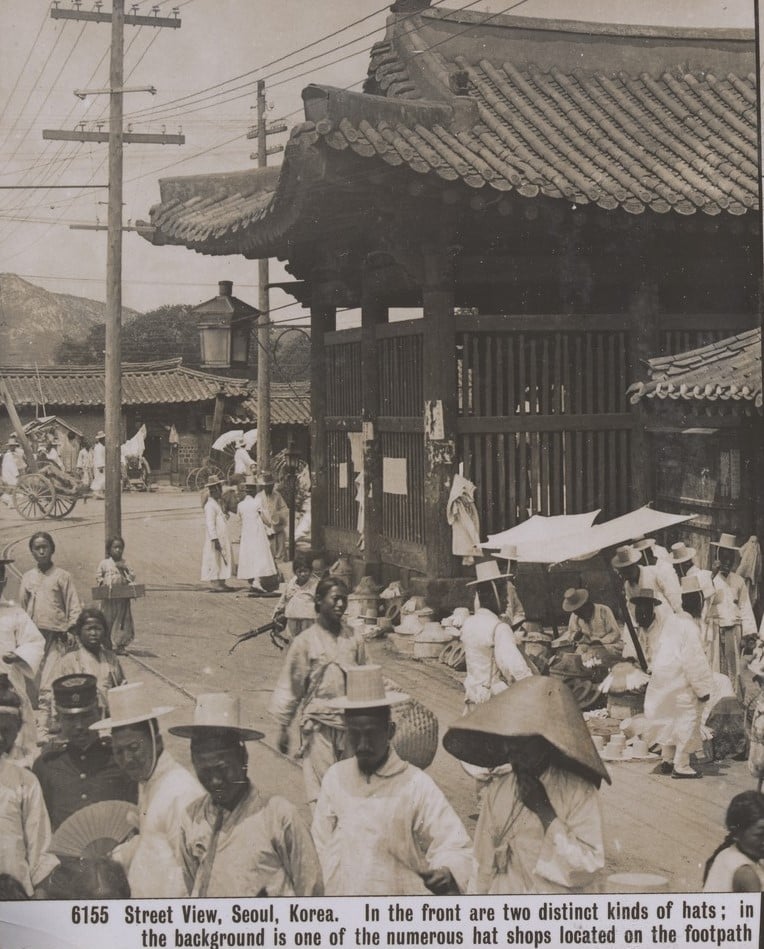
Meanwhile, working Koreans went about their daily business in narrow city streets thronging with people. This was a colourful world of people wearing an assortment of clothing and hats, surrounded by picturesque buildings. Rose tells us that the small white hats consisted of a black gauze framework fitted to the head, with the hat sitting above it. This gave the wearer both ventilation and shade. One man wears a large straw mourning hat, which was worn when mourning the death of a parent. Behind the street scene are mountains and trees, an indication that it was very much a rural society.

Market day was especially crowded, as country people came to town to buy and sell goods.
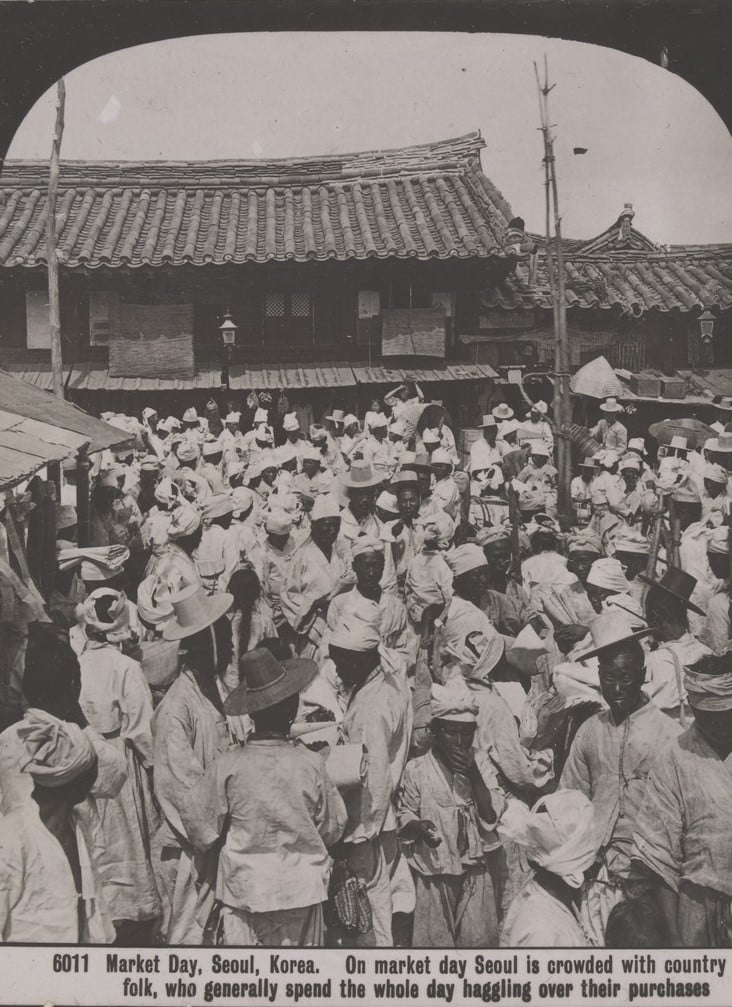
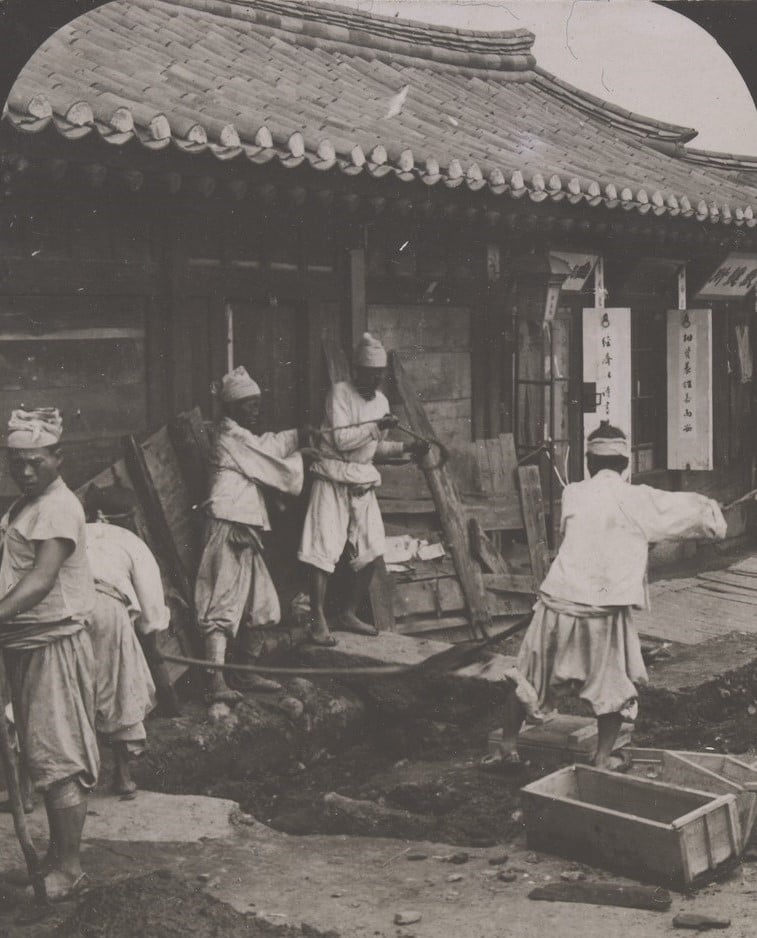
In 1904, Korea was a pre-industrial society. Work was manual, labour-intensive and hard. Rose captured this image of five Korean labourers sharing the one shovel. Rose considered this inefficient, but today we can only marvel at the work achieved through manual labour. The beautiful roof is one example.
Rose also captured images of temples and landscapes in Korea.

Japan
In Japan as in Korea, Rose photographed ordinary people doing their daily tasks: he highlighted the lives of labourers, market women, farmers and children; even showing laundry drying on a rooftop.

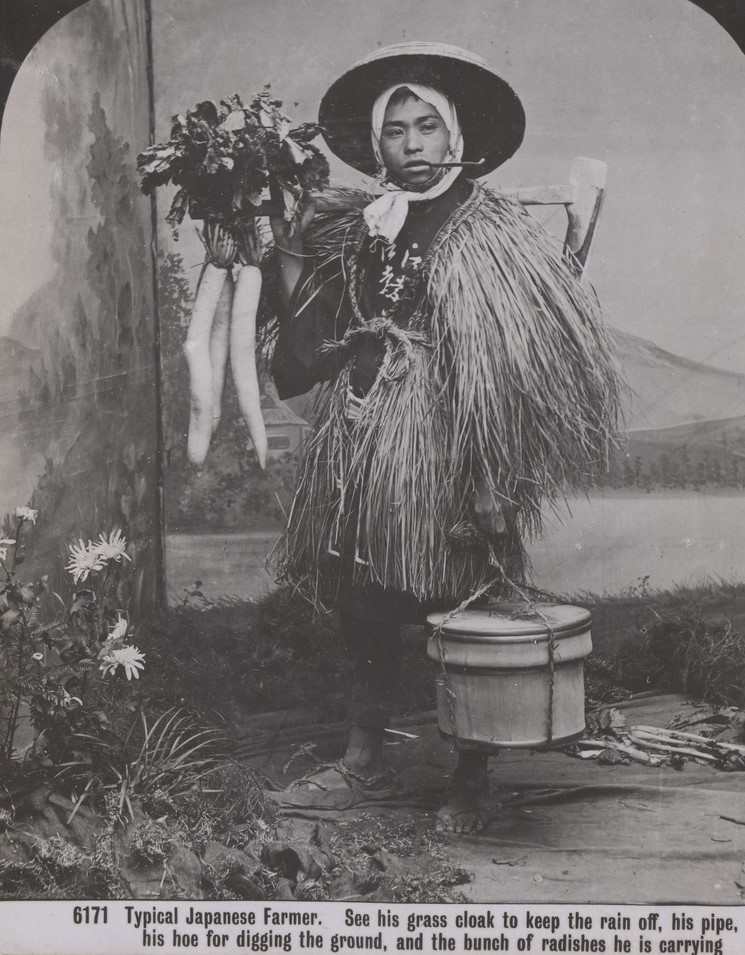

[Note: ‘Coolies’ is an outdated cultural term. Today we would use the term ‘labourers’]. This image shows Japanese labourers carrying heavy bundles of wood and charcoal on carrying frames. A rocky tunnel stands behind them.
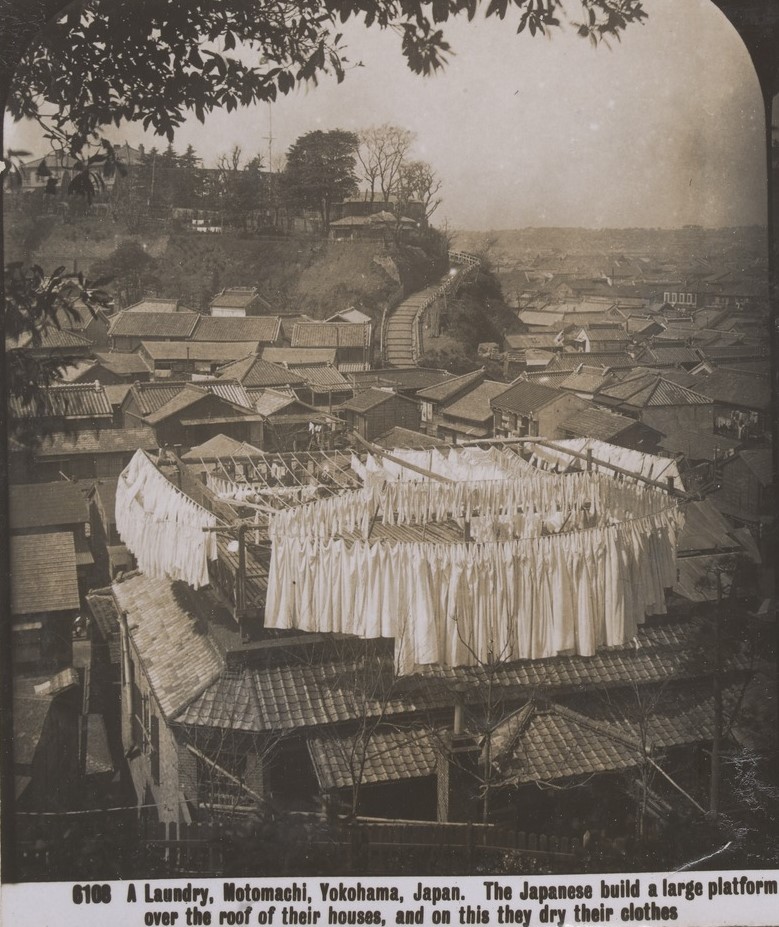
Working Japanese women appear in this photo (below) of female hawkers carrying and wheeling large baskets at the market. They wear practical clothing and a variety of hats. Rose’s photos reveal volumes about the lives of these people.

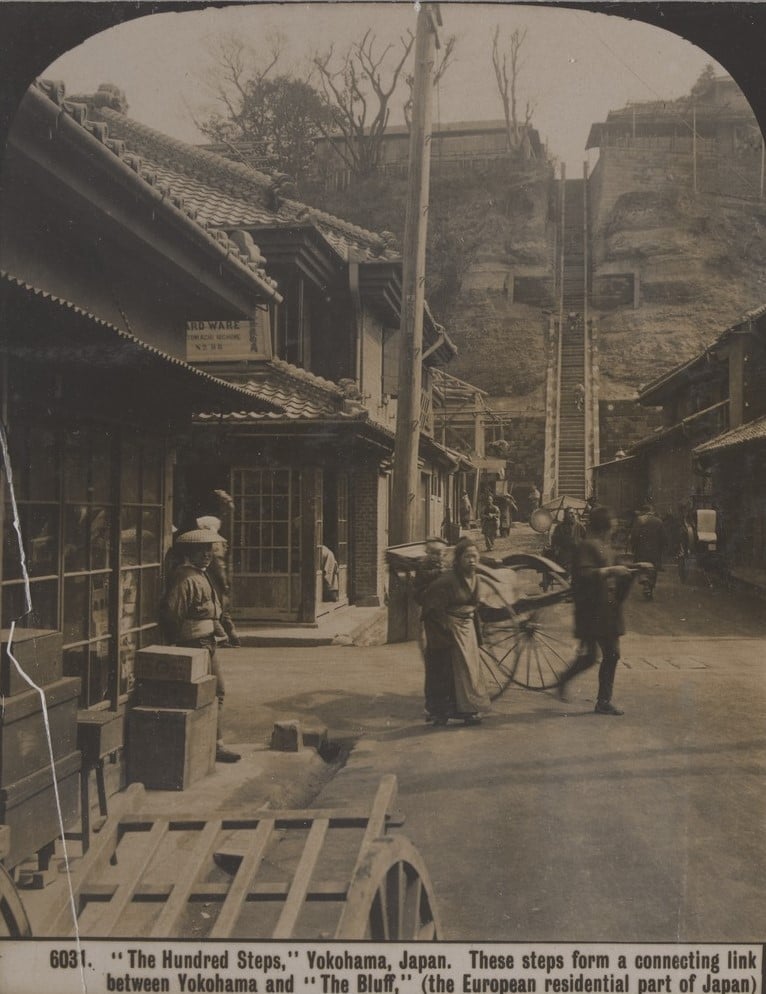
Rose did not neglect Japanese sport and leisure: in this image below we see famous Japanese wrestlers, who were larger and taller than the average Japanese. Their garments feature elaborate designs.
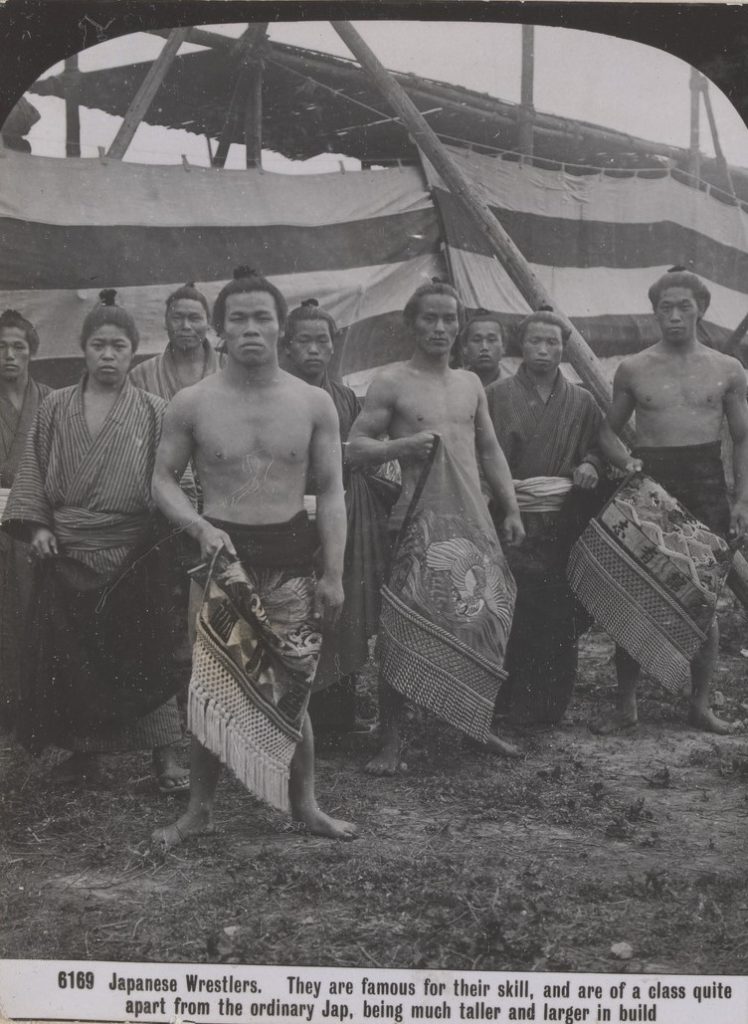
Rose also captured the activities of Japanese women enjoying an array of social and cultural activities: writing, playing music, dancing, smoking, playing games and visiting the tea house. Dressed in elaborate kimonos, they enjoyed their recreation separately from the men. Rose’s captions provide valuable context.

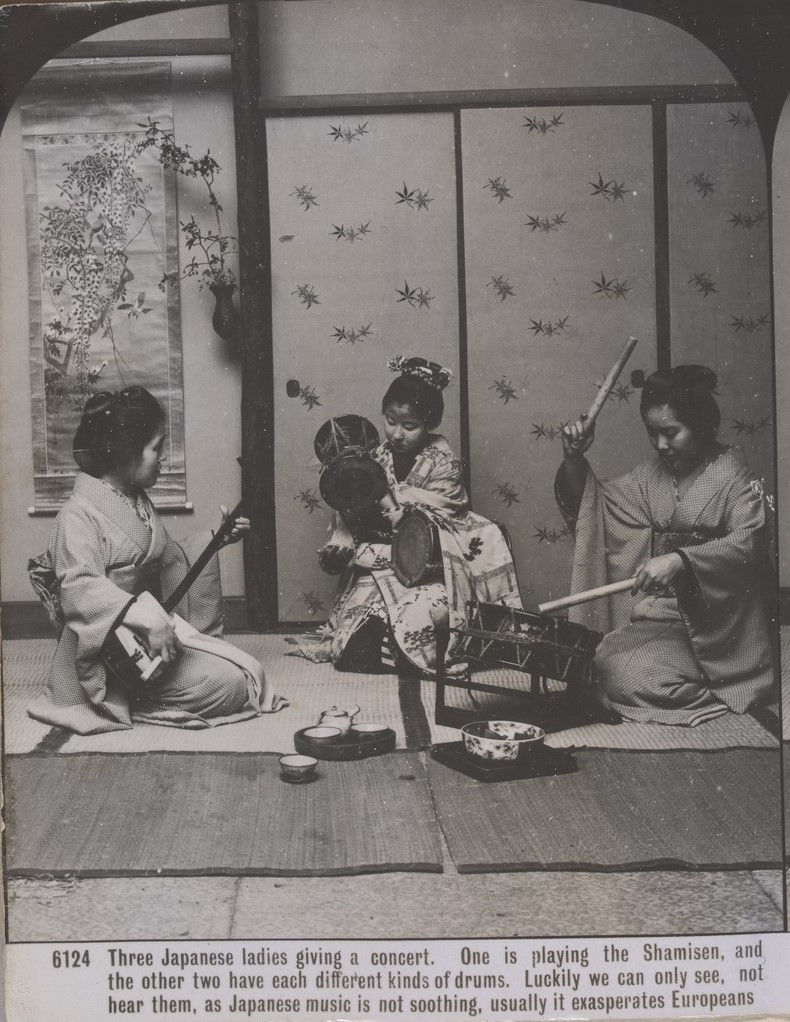
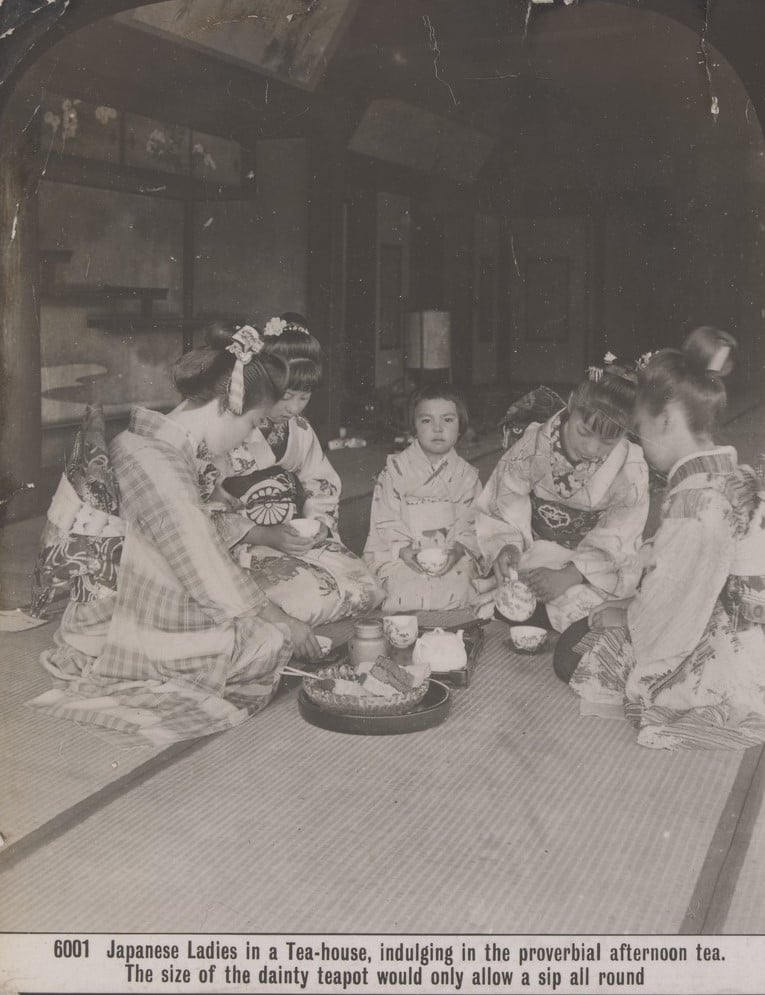
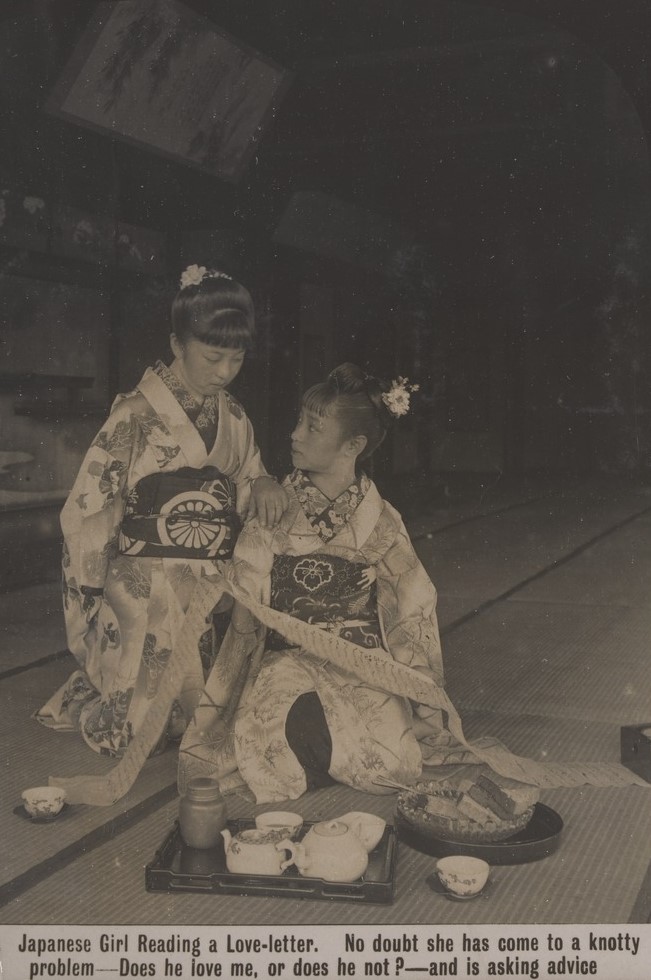
You can view more of Rose’s fascinating photographs of old Korea and Japan on the Library catalogue.
Just go to the Search box and change the drop-down menu option to ‘Pictures & photographs’. To find Rose’s photographs of Korea, type the words: Rose Korea in the Search box and then press the Search button. To find his photos of Japan, type the words: Rose Japan.
Most of the images have been digitised, so you can view them online.
Further reading
Peterson, M, & Margulies, P, 2010, A brief history of Korea, Facts On File, New York
Rose, George, 2004, Hoju sajinʾga ŭi nun ŭl tʻonghae pon Hanʾguk 1904 = Korea through Australian eyes, Kyobo Book Centre Australia-Korea Foundation, Seoul


